A couple weekends ago I picked up the most recent issue of Skillset Magazine (Summer 2019 Edition). Much to my surprise, one of the articles was on the use of snubby revolvers by, shall we say, interesting personnel. The featured photograph caught my eye because there was a twisted piece of coat hanger wrapped around the an old S&W .38. I didn’t understand what I was looking at until I read the article and saw the term “coat hanger carry.”
Disclaimer: RevolverGuy and its staff recommend always using a holster that protects your firearm’s trigger from accidental actuation. If you use the techniques presented here, you do so at your own risk.
What The Heck is Coat Hanger Carry?
The concept intrigued me. Though the article didn’t explain how to execute coat hanger carry, the text and accompanying photo gave me just enough to build on the concept, and little enough that I needed to figure some things out on my own. A little Googling revealed coat hanger carry isn’t totally unheard of, but also doesn’t seem to be widely known. Essentially, coat hanger carry allows you to modify a wire coat hanger for use as a minimalist “holster.”
Why would you ever want to do this? First, it is possible that a time will come when you have a revolver but lack a holster. Your holster might break or be lost. This method gives you a reasonably secure way to carry your revolver. You can improvise this method in the field for almost no cost. I probably wouldn’t use a coat hanger holster if a factory holster (even a sub-optimal model) was an option but again, I like knowing this technique is there.
Coat hanger carry allows for really deep carry. It allows you to get the gun fully below the belt line (if so desired) with nothing more than a tiny bit of wire exposed. This is a neat option for really deep concealment.
A more esoteric reason reason for coat hanger carry is more in line with the philosophy of Guerilla Gunfighter: Clandestine Carry Pistol by John Mosby. That is to say, it may be appropriate for carry in truly non-permissive environments where one may be required to ditch the revolver. Having a holster attached to your belt would be a dead giveaway that you were, until recently, carrying a gun. It’s pretty unlikely that I’ll ever be in such a situation, but that doesn’t mean I don’t want to have the information. If you believe it’s impossible you’ll ever be in such a situation, check out my new podcast addiction, It Could Happen Here.
How it Works
Coat hanger carry is pretty simple, and requires crafting a coat hanger holster. This requires cutting the hanger and building in two general features: a hook or loop to hold the gun, and hooks to attach the rig to your waistband. The revolver is trapped between the wearer’s pants and body. The coat hanger holster prevents it from sliding down in the pants, and somewhat prevents it from shifting side-to-side. There really isn’t much more to it than that.
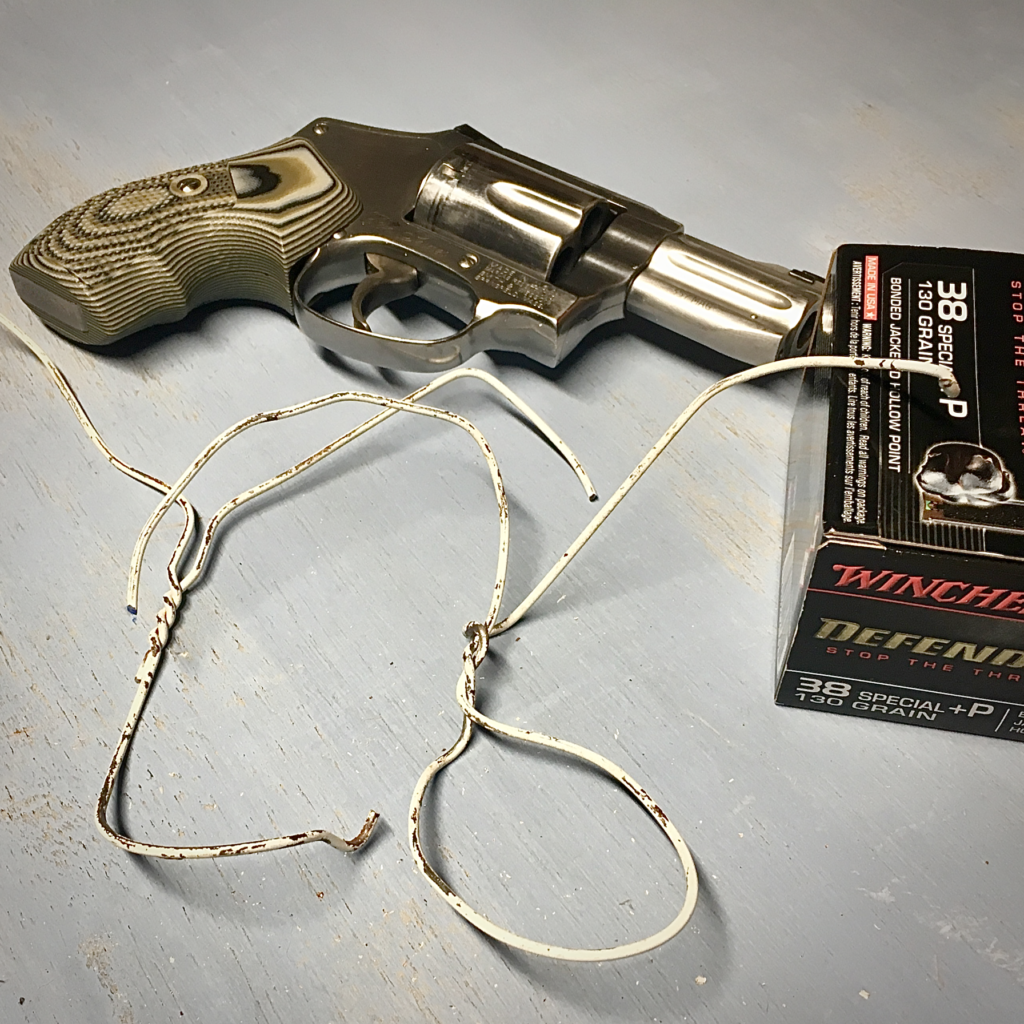
Snubby revolvers seem to be the best candidates for coat hanger carry. The narrow barrel fits well in the hook or loop to hold the gun up, and the frame provides a suitable ledge to prevent the gun from sliding further into the pants. Secondly – and more importantly – the double-action trigger of a revolver provides a comfortable safety margin. Obviously a coat hanger holster does not cover the gun’s trigger, so this is definitely not recommended for single-action or striker-fired handguns.
Constructing a Coat Hanger Holster
I had to try this carry method for myself. In keeping with the spirit of the thing, I wanted to do this in an improvised fashion, so I limited tools and materials. I began with a wire coat hanger that I found. It turns out that among my entire household effects, I didn’t have a single wire coat hanger. But I found one, hanging from a pipe behind my water heater, covered in cobwebs. Perfect!
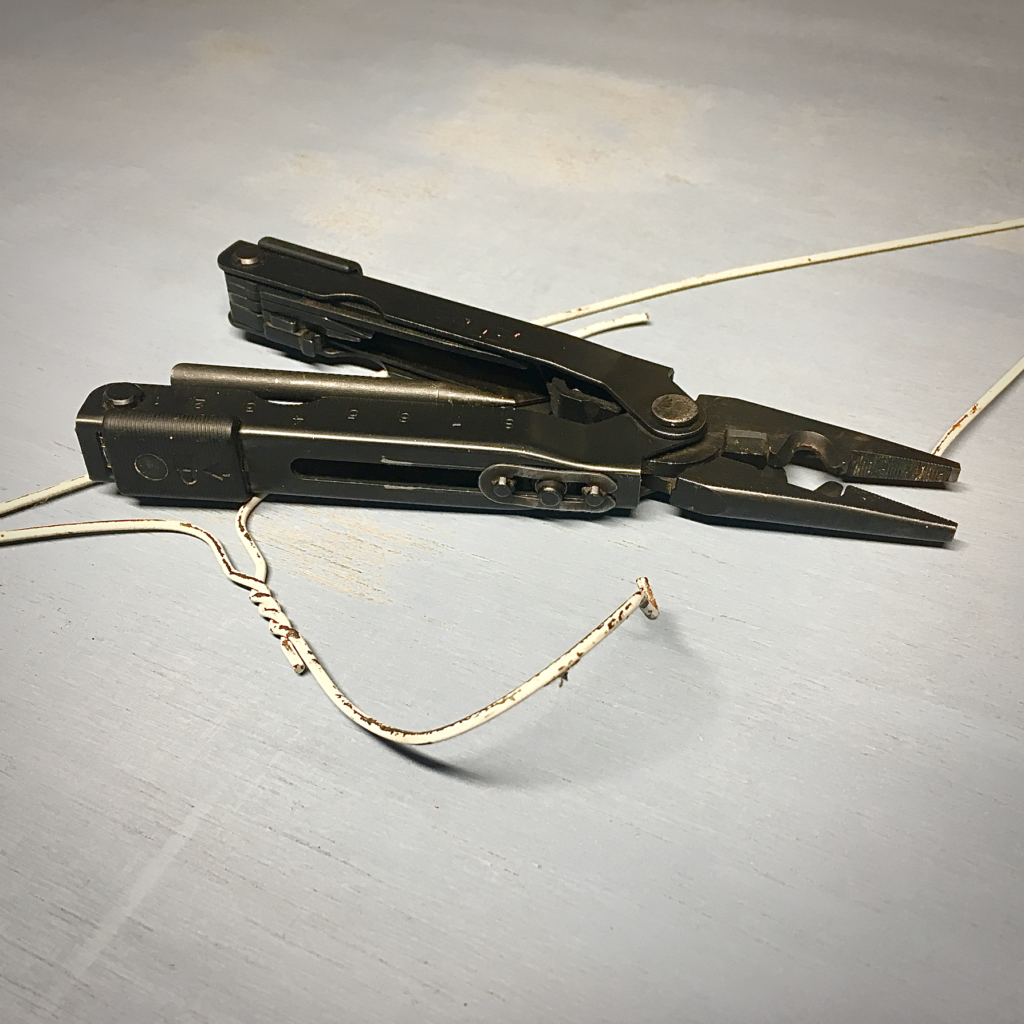
Next, I definitely needed some tools but wanted to keep them to a bare minimum. All I allowed myself was a Gerber multi-tool. Using more tools would have made the process easier and probably would have resulted in a better final product, but I was still able to produce two working coat hanger holsters. I’m not going to provide a step-by-step guide. Your best results will come from trial and error rather than following any attempt I could provide at instructions. However, here are the basics and some lessons I learned along the way.
First, you need to construct the “hook” to hold the gun up. On my first attempt, I used the natural hook that was designed into the hanger. This worked OK, but as I discovered later, it is weaker than building in your own hook from the middle of the wire. As soon as you cut the hanger, the only thing holding the two pieces of your coat hanger holster together is the twist in the wire. A little tape could be used for reinforcement, but I’d still prefer to make my own loop. By making your own loop, your coat hanger holster is as single piece of wire.
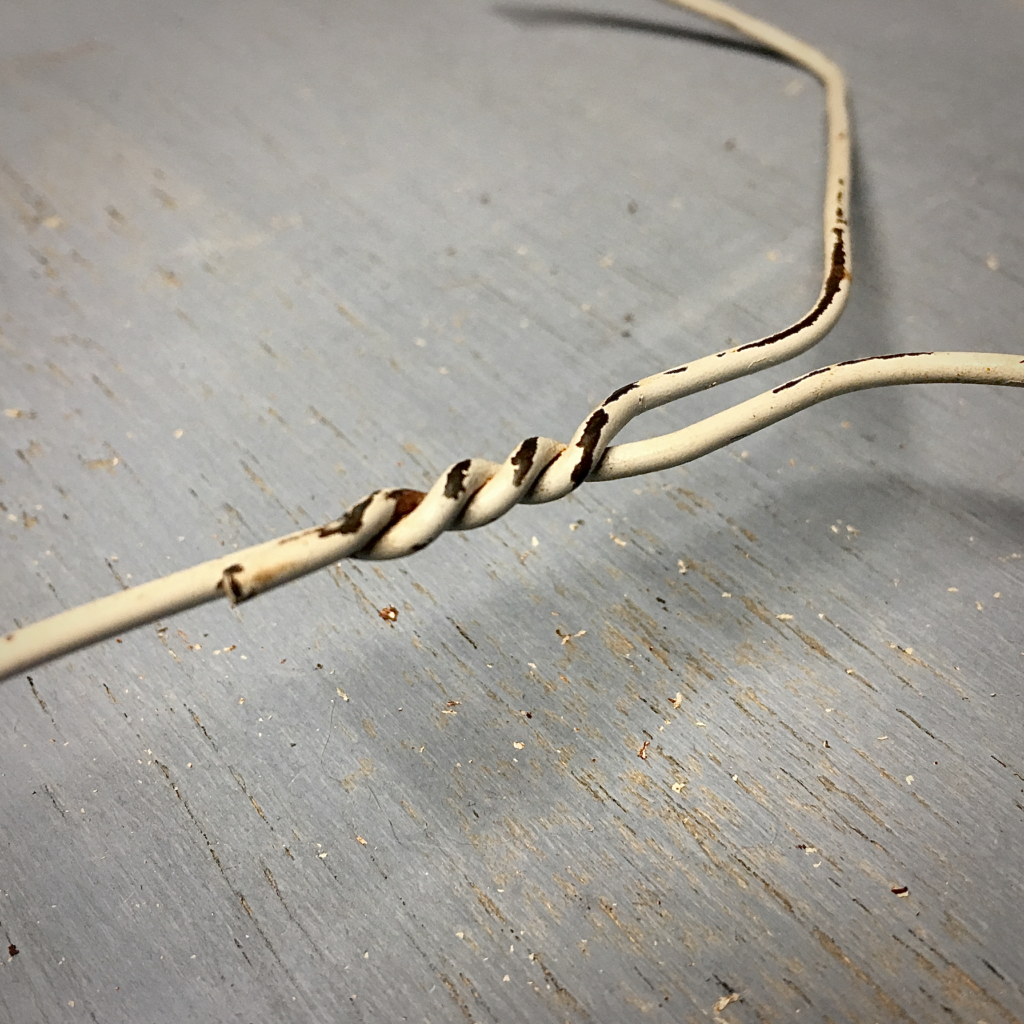
Second: measure twice, cut once. On my first go, I cut the “tails” too short. I was still able to make it work, but it would have been easier to start with too much material. On my second attempt I followed my own advice and started with more material. This let me get (mostly) correct bends, find a good fit, then cut.
My second go was not perfect, but still pretty decent. I created a full loop from straight, bottom portion of the hanger. It turned out a bit too big, encompassing the whole frame, resulting the gun being held up by the trigger guard but it still works. I bent the tails into two much longer hooks which I slip over the waistband of my pants, but behind my belt.
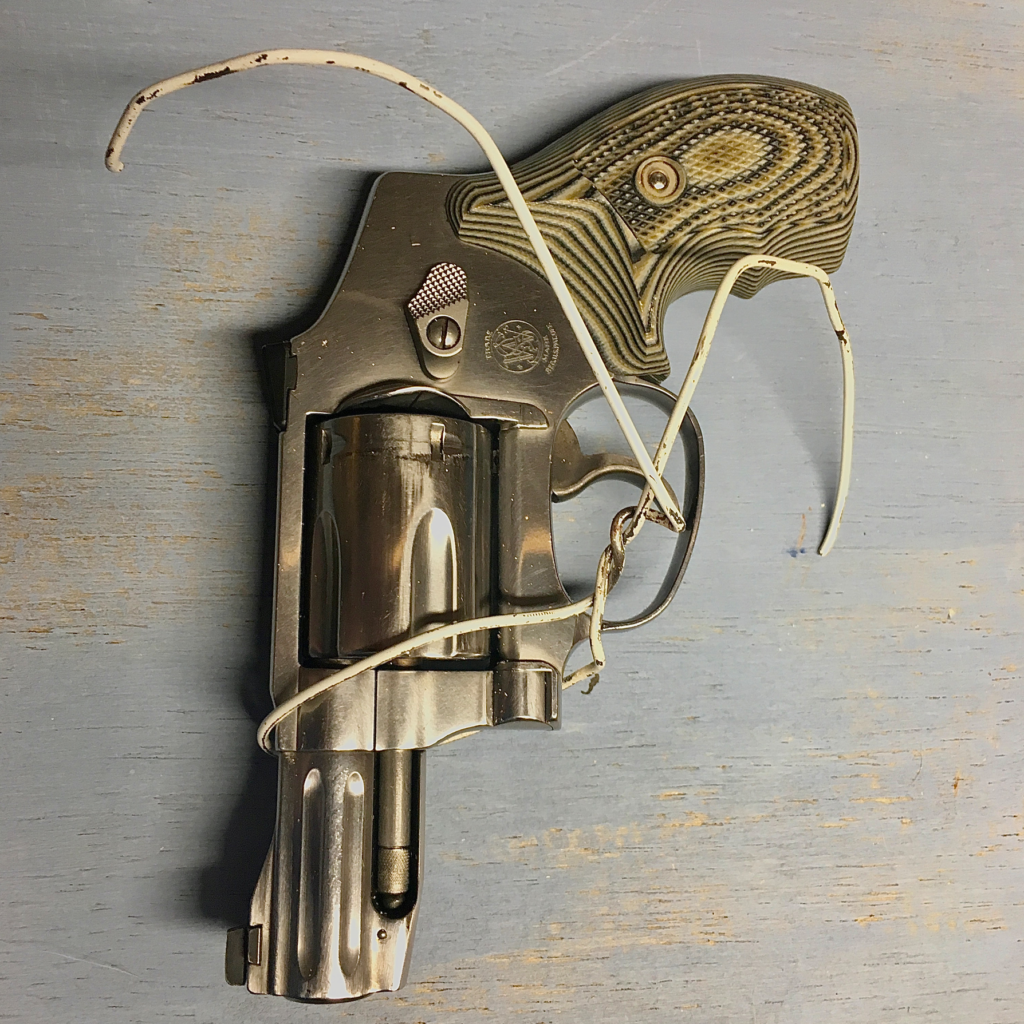
The third lesson learned is that the vertical stretches of wire coming up from the barrel hook/loop need to be on one side or other of the cylinder. The preferable position is along the frame under the cylinder. This provides some horizontal support for the gun – another reason this is pretty much a revolvers-only technique.
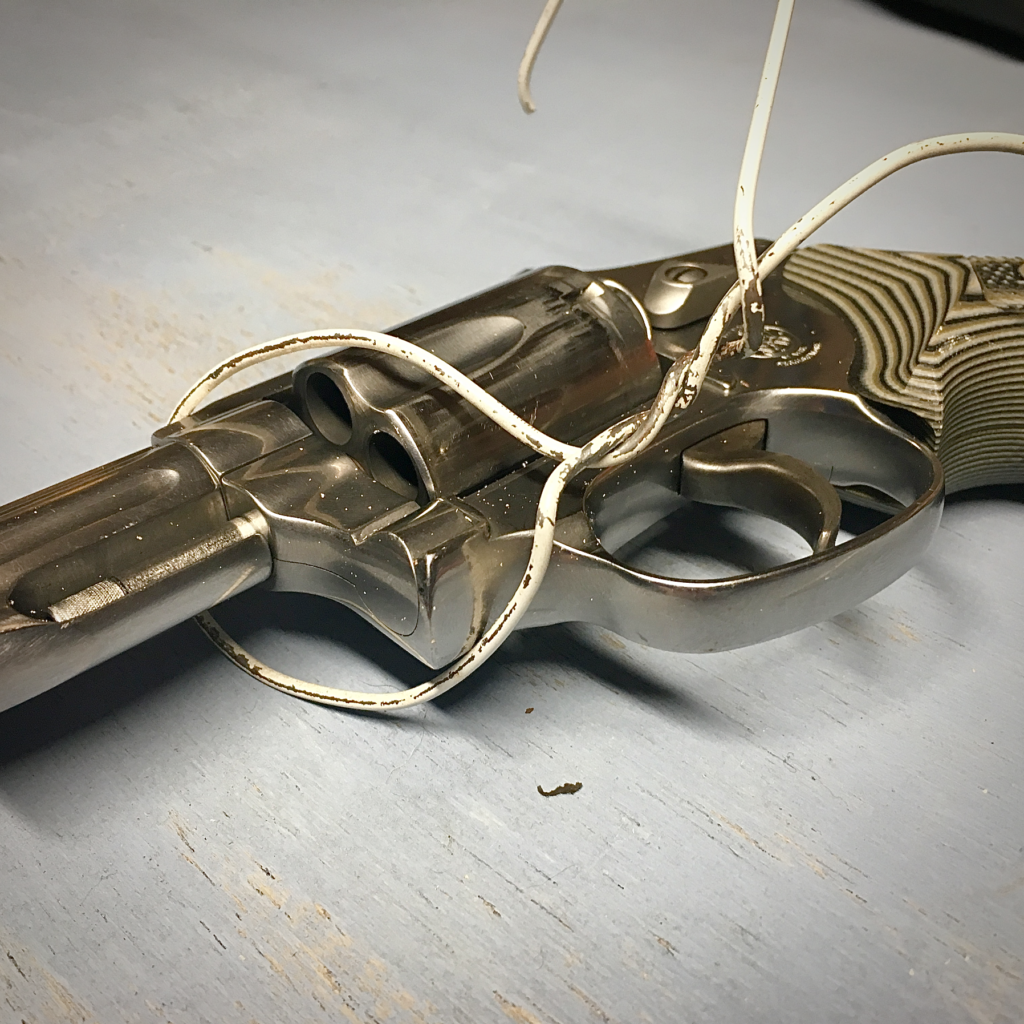
Coat Hanger Carry: Lessons Learned
I actually used my coat hanger holster a little, to see how it work and offer what suggestions I can. I carried it around the house a bit, and finally got brave enough to wear it to the grocery store. I still had my 1911 in a OWB holster because…we’ll discuss the draw stroke soon. Here are my thoughts.
Coat hanger carry is made for AIWB. This felt soon good in the appendix position I didn’t even bother trying it on the strong side. Next, holstering isn’t exactly “holstering.” Holstering is getting the wire fitted correctly to the gun, then getting the whole apparatus in place on your body without pinching yourself, or poking yourself with sharp wire. If you draw the revolver and suddenly need your hands free, you need to be prepared to shove it in a pocket. It’s simply not going back in the coat hanger holster quickly or with one hand.
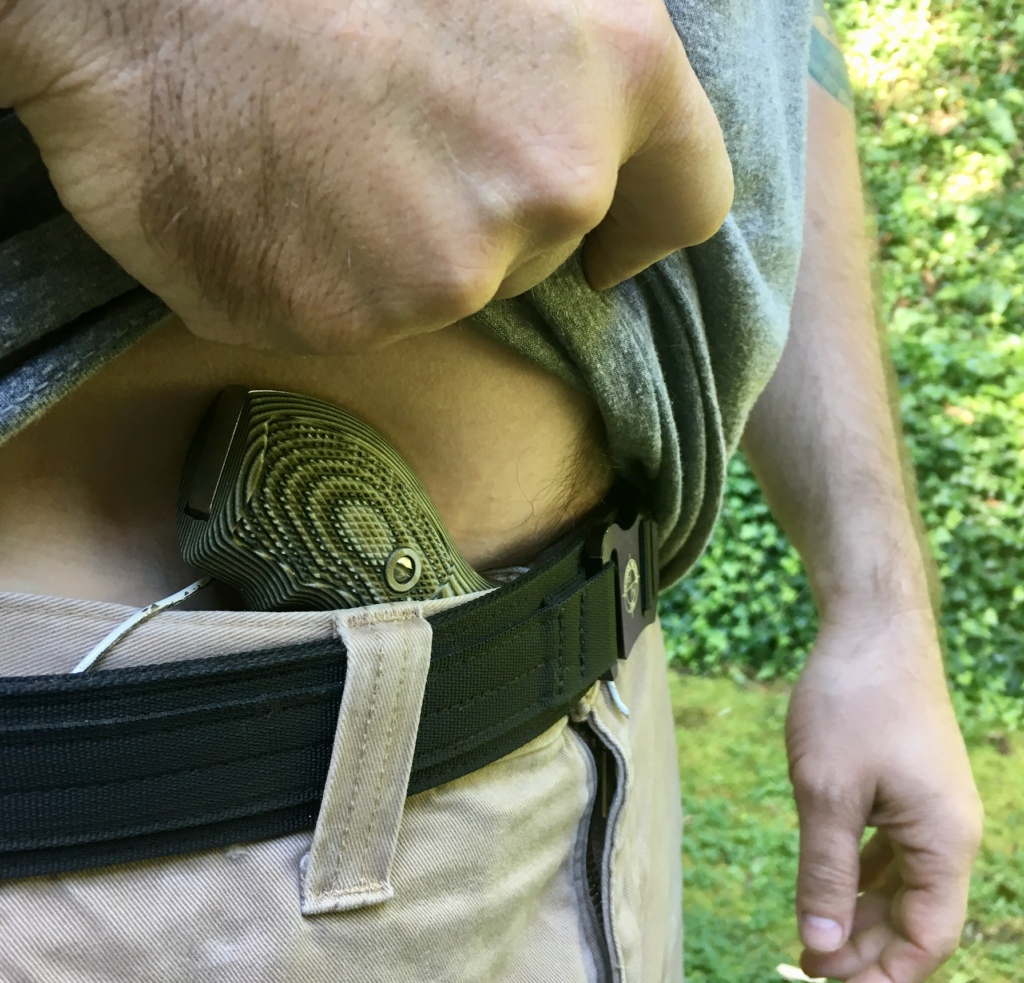
The draw stroke with coat hanger carry is slow, but that could be because of my design. The coat hanger holster I used (my second one) got the gun deep into the waistband. This made it hard to acquire a full firing grip. In the future I would definitely try to modify this to raise the gun up a bit, unless I really needed deep concealment.
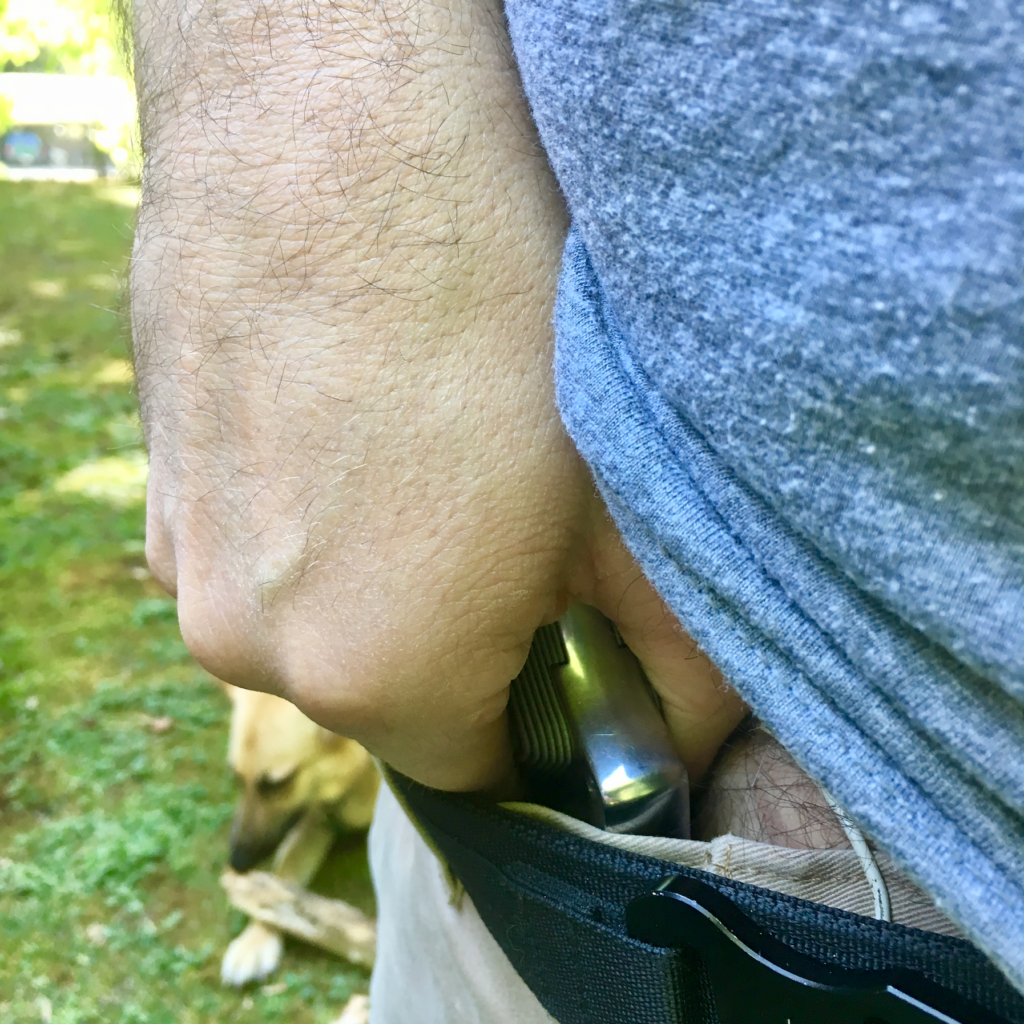
This technique did conceal the gun as well as any store-bought holster I own, and better than some. The thing I was most surprised with: it held the gun in place. It kept the gun in the same spot through multiple repetitions of sitting and standing, and walking around. I wouldn’t want to be involved in a foot chase or a grappling match with this holster, but for day-to-day stuff it works surprisingly well.
Finally, be prepared for some scratches on your gun if you use this technique. Don’t practice on your mint condition, blued 2.5″ Python. I used my 640 Pro which has been thoroughly beaten up, so I wasn’t worried about it. Since this is a last-ditch, improvised technique, you probably won’t care much either if you have to coat hanger carry.
The Bottom Line
I’m not going to be dumping all my holsters in favor of coat hanger carry. In fact, we don’t recommend coat hanger carry at all unless you find yourself in a true emergency and have to resort to this method. Although it is doubtful I will ever need or use coat hanger carry, I like to know about techniques like this. It’s better to have the knowledge and not need it than the other way around.
Hat tip to Skillset Magazine! If you haven’t checked it out, you should. It’s not a gun magazine, it’s an “Alpha lifestyle” magazine so the content is somewhat varied. Most of it should appeal to RevolverGuys, though. Although I have no personal interest in the sales of Skillset I have written there, back in the Spring 2019 issue. If you run across it, pick it up!

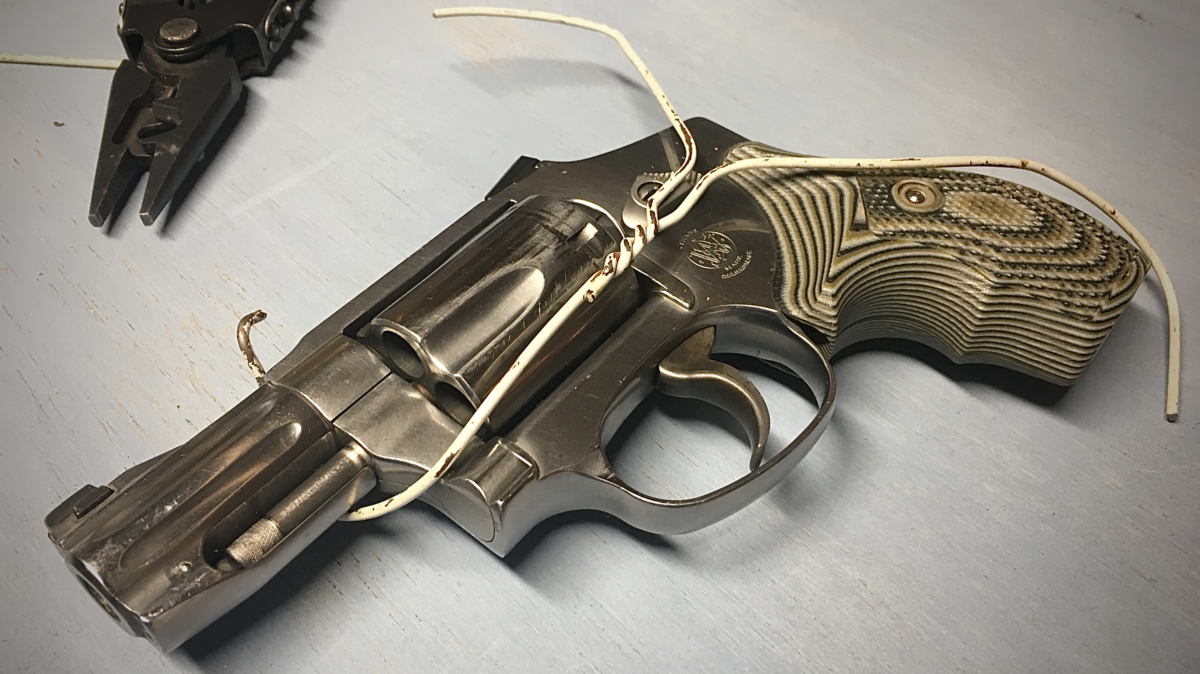
Think I’ll stick to my shoestrings method.
Less likely to scratch my tender skin.
Haha, yep, there is some potential for getting scratched or getting a chunk of skin pinched between the wire and the gun. Ask me how I know!
I tried the shoestring method once several decades ago. It seemed like a definite improvement over Mexican Carry, but I’m glad I don’t have to rely on it!
Interesting. Have you ever tried a duct tape holster? Works great for super-deep concealment; just tape the gun anywhere on your body you want—chest, small of the back, over the shoulder, inner thigh, wherever. To draw, just rip one end of the tape off, the gun will be stuck to the tape, pull the gun off the tape, and off you go. And the good thing is, the tape doesn’t scratch the finish; it may leave a little sticky residue, but that can be removed with a little acetone and a match. This type of holster works quite well with the little baby semi-autos, as well (but the acetone’n’match cleaning method might not be a good idea for the plastic pistols). [a tongue-in-cheek smiley would work here]
Sometimes in my classes, I bring an assortment of holsters for people to look at. Maybe I’ll make a couple of these, and include them in the pile–with an explanation, of course. Ace
Ace, in your experience, do the howls of pain that go with this method tend to scare the bejeezus out of the bad guy, or do they cause him to laugh uncontrollably as you dance around with a hairy gun and tears rollin’ down?
I know John McClane used this method to destroy the Nakotomi Building singlehandedly, but I’ma guessin’ he had a good back shave before that scene.
Not dismissing it as practical, ya know, just wonderin’ how I’d look at the police lineup when they told me to lift my shirt, and I was the only one standing there with a big, red, hairless stripe on my belly. Case closed.
I can’t believe the ladies do that to look nice for us guys. We owe them more than flowers and a trip to the steak house for that. ; ^ )
This is interesting as an improvised holster for emergencies, but in the same situations it could be useful in I’d be more comfortable and practiced with a snubby in my pocket. There are a couple companies that make clips that attach to guns too, I’ve seen them for j frames and Glocks, but even then I already have enough practice drawing from a holster or pocket to where it wouldn’t be worth changing.
I could pocket carry some J-Frames, but not all. The heavier, all-steel models just drag my pants down too much. I know I couldn’t pocket carry a K-Frame/K6s/King Cobra/SP101-sized gun, either. For me this technique has utility despite the existence of other methods.
It is doubtful that any tool or technique I have ever written about or will ever write about will work for everyone. If this doesn’t work for you, maybe it can work for someone you know. Or maybe not, but knowledge is still free, doesn’t weigh anything, and doesn’t take up any space.
Adding a bit of duct or electrical tape to the end, maybe you could run it up into the barrel.
Riley, there was a gimmick holster out for a while that had a plastic rod to fit into the barrel; don’t remember the name.
Mike, the scream of pain as the tape is pulled functions much like the battle cries the Whu Flung Dung martial arts types use. It’s just an added benefit to the method. Ace
VersaCarry. They have a reputation for that spindle breaking off in the barrel. No bueno.
DeSantis made a grip with a tab on it that basically does the same thing if you like carrying this way.
My take: has nothing on just putting it in your pocket.
I think you’re referring to the Barami Hip Grip which is fine if you have one. If you don’t, good luck finding one on short notice. In case you didn’t read the whole thing, I did couch this as an emergency technique.
That’s fine if the gun will fit in your pocket, and you don’t have anything else in there. If the gun won’t fit, pocket carry has nothing on this.
Great, now I’m going to be cutting and bending up wire hangers for days…
I think those mentioning pocket carry as a better alternative miss the entire point of this carry. A pistol in a pocket is noticeable especially if your looking for such threats.
First it was developed I believe in latin america, as least where I first and the only place seen it to this day. To this day thier snubbies are a gun of choice in many circles. It was foremost for deep concealment. Even US personel at times carried this way that were stationed/assigned to the SComm. In fact issued kit many times included a snubbie (not the cloth hanger holster) at least thru the mid 90s which is where my exposure ends in that region.
For that type of carry when you have time to tweak it and add ducy tape etc it can make a J or even a K frame size snubbie dissapear compleyely to an outside observer and anything short of a proper pat down. It can be dumped with the gun and offer no identifiers etc.
Snubbies are/were the choice for assinations and general hits by gangs etc. This carry is again a goto for those groups and actions.
Overall or at least it use to be at least into early 2k yrs revolvers were goto in these countries. Easy to keep running, fab parts for etc in that region. Its was nothing like the availabilty we have in the USA or even most of EU of plastic guns. At least then semiautos found there were mostly mil 1911 thru 80s that filtered in from mil programs and from our involvment and training/aid in Central American countries. Much like what you found in the phillipines during those periods.
Its a great deep cover for say a current scadmium 340/36PD SW J Frame 357/38. @ 11 ozs appendix carry you would not hardly notice it after a bit. No oxidation issues from sweat. A rubberized grip helps hold even more snug. If you tuck in a undershirt with a unbuttoned loose fit collared shirt the undershirt helps with securing the gun as well as aiding somewhat with a smoother draw at least it seems to expidite it. You could even try pulling up on the undershirt with the off hand depending how deep you set the hanger drop length. Its easier to see than visualize from a writen description.
Keep up the great blog and articles. This was a great blast of nostaliga I had not expected.
Cheers…..